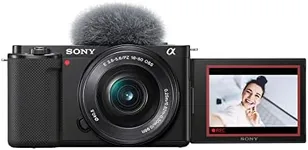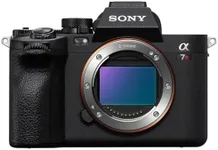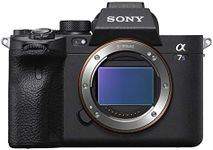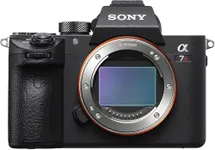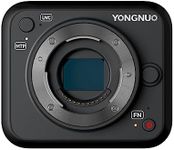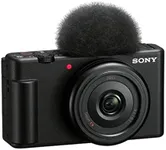Buying Guide for the Best Dslr Camera Deals
When choosing a DSLR camera, it's important to consider your specific needs and how you plan to use the camera. Whether you're a beginner looking to explore photography or a professional seeking advanced features, understanding the key specifications will help you make an informed decision. Here are some essential specs to consider when picking the right DSLR camera for you.Sensor SizeThe sensor size in a DSLR camera determines the quality of the images it can produce. Larger sensors, such as full-frame sensors, capture more light and detail, resulting in higher image quality, especially in low-light conditions. APS-C sensors are smaller but still offer excellent quality and are more affordable. If you're a professional or serious enthusiast, a full-frame sensor might be the best choice. For beginners or casual photographers, an APS-C sensor can provide a good balance of quality and cost.
MegapixelsMegapixels refer to the resolution of the camera's sensor, indicating how many millions of pixels the camera can capture. Higher megapixels mean more detail in your photos, which is important for large prints or cropping images. However, more megapixels also mean larger file sizes. For most users, a camera with 16-24 megapixels is sufficient. If you need extremely high resolution for professional work, consider cameras with 30+ megapixels.
ISO RangeThe ISO range of a camera determines its sensitivity to light. A wider ISO range allows for better performance in various lighting conditions, from bright sunlight to low-light environments. Cameras with higher ISO capabilities can capture clearer images in low light without needing a flash. If you often shoot in low-light conditions, look for a camera with a high maximum ISO. For general use, a standard ISO range of 100-3200 is usually adequate.
Autofocus SystemThe autofocus system in a DSLR camera affects how quickly and accurately the camera can focus on a subject. More autofocus points and advanced tracking features can help capture sharp images, especially in fast-moving situations like sports or wildlife photography. If you need precise and fast focusing, look for cameras with advanced autofocus systems. For everyday photography, a basic autofocus system with fewer points may be sufficient.
Continuous Shooting SpeedContinuous shooting speed, measured in frames per second (fps), indicates how many photos the camera can take in a burst. This is important for capturing fast action, such as sports or wildlife. Higher fps allows you to take multiple shots quickly, increasing the chances of getting the perfect shot. If you frequently shoot action scenes, look for a camera with a higher fps. For general photography, a lower fps is usually adequate.
Video CapabilitiesMany DSLR cameras offer video recording features, with varying resolutions and frame rates. If you plan to shoot videos, consider the camera's video capabilities, such as 4K resolution and high frame rates for smooth motion. Some cameras also offer advanced video features like external microphone inputs and manual controls. If video is a significant part of your work, prioritize these features. For occasional video recording, basic HD video capabilities may be sufficient.
Build Quality and ErgonomicsThe build quality and ergonomics of a DSLR camera affect its durability and comfort during use. Cameras with weather-sealed bodies are more resistant to dust and moisture, making them suitable for outdoor photography. Ergonomics, such as the grip and button layout, impact how comfortable the camera is to hold and operate. If you plan to use the camera extensively or in challenging conditions, prioritize build quality and ergonomics. For casual use, a lighter and simpler design may be more convenient.
Lens CompatibilityDSLR cameras use interchangeable lenses, allowing you to choose the best lens for different types of photography. It's important to consider the range and quality of lenses available for the camera brand you choose. Some brands offer a wider selection of lenses, including specialized options for macro, telephoto, and wide-angle photography. If you have specific lens needs or plan to expand your lens collection, research the available lenses for the camera system. For general photography, a versatile kit lens may be sufficient to start with.
